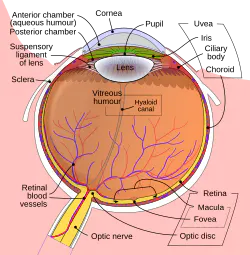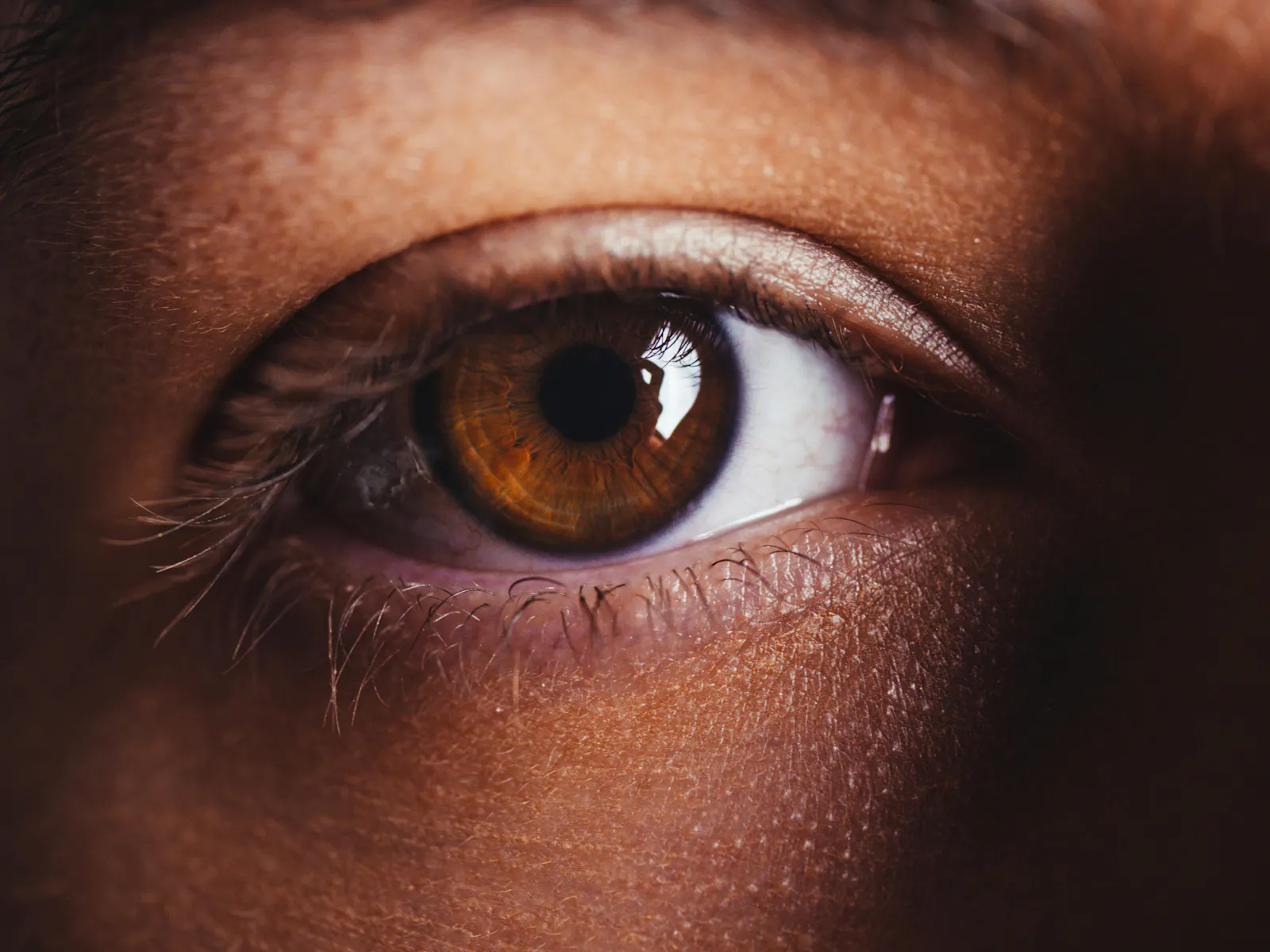
Eye
From Wikipedia, the free encyclopedia
Jump to navigation (Öffnet in neuem Fenster)Jump to search (Öffnet in neuem Fenster)
This article is about the organ. For the human eye, see Human eye (Öffnet in neuem Fenster). For the letter, see I (Öffnet in neuem Fenster). For other uses, see Eye (disambiguation) (Öffnet in neuem Fenster).
"Eyeball", "Eyes", and "Ocular" redirect here. For other uses, see Eyeball (disambiguation) (Öffnet in neuem Fenster), Eyes (disambiguation) (Öffnet in neuem Fenster), and Ocular (disambiguation) (Öffnet in neuem Fenster).
Eye
A human eye (Öffnet in neuem Fenster)

Compound eye (Öffnet in neuem Fenster) of an Antarctic krill (Öffnet in neuem Fenster)
DetailsSystem (Öffnet in neuem Fenster)Nervous (Öffnet in neuem Fenster)IdentifiersLatin (Öffnet in neuem Fenster)OculusMeSH (Öffnet in neuem Fenster)D005123 (Öffnet in neuem Fenster)TA98 (Öffnet in neuem Fenster)A15.2.00.001 (Öffnet in neuem Fenster)
A01.1.00.007 (Öffnet in neuem Fenster)TA2 (Öffnet in neuem Fenster)113 (Öffnet in neuem Fenster), 6734 (Öffnet in neuem Fenster)FMA (Öffnet in neuem Fenster)54448 (Öffnet in neuem Fenster)Anatomical terminology (Öffnet in neuem Fenster)
[edit on Wikidata (Öffnet in neuem Fenster)]
Eyes are organs (Öffnet in neuem Fenster) of the visual system (Öffnet in neuem Fenster). They provide animals with vision (Öffnet in neuem Fenster), the ability to receive and process visual detail, as well as enabling several photo response functions that are independent of vision. Eyes detect light (Öffnet in neuem Fenster) and convert it into electro-chemical impulses in neurons (Öffnet in neuem Fenster). In higher organisms, the eye is a complex optical (Öffnet in neuem Fenster) system which collects light from the surrounding environment, regulates its intensity through a diaphragm (Öffnet in neuem Fenster), focuses (Öffnet in neuem Fenster) it through an adjustable assembly of lenses (Öffnet in neuem Fenster) to form an image (Öffnet in neuem Fenster), converts this image into a set of electrical signals, and transmits these signals to the brain (Öffnet in neuem Fenster) through complex neural pathways that connect the eye via the optic nerve (Öffnet in neuem Fenster) to the visual cortex (Öffnet in neuem Fenster) and other areas of the brain. Eyes with resolving power have come in ten fundamentally different forms, and 96% of animal (Öffnet in neuem Fenster) species possess a complex optical system.[1] (Öffnet in neuem Fenster) Image-resolving eyes are present in molluscs (Öffnet in neuem Fenster), chordates (Öffnet in neuem Fenster) and arthropods (Öffnet in neuem Fenster).[2] (Öffnet in neuem Fenster)
The most simple eyes, pit eyes, are eye-spots which may be set into a pit to reduce the angles of light that enters and affects the eye-spot, to allow the organism to deduce the angle of incoming light.[1] (Öffnet in neuem Fenster) From more complex eyes, retinal photosensitive ganglion cells (Öffnet in neuem Fenster) send signals along the retinohypothalamic tract (Öffnet in neuem Fenster) to the suprachiasmatic nuclei (Öffnet in neuem Fenster) to effect circadian adjustment and to the pretectal area (Öffnet in neuem Fenster) to control the pu (Öffnet in neuem Fenster)
